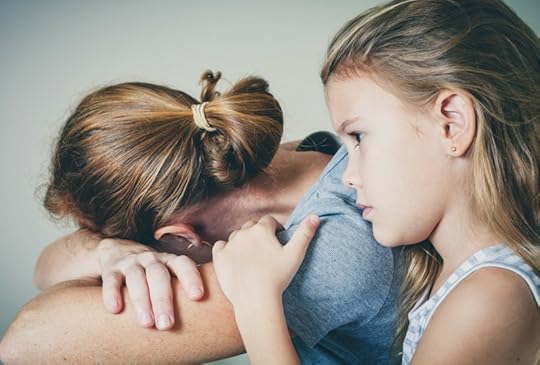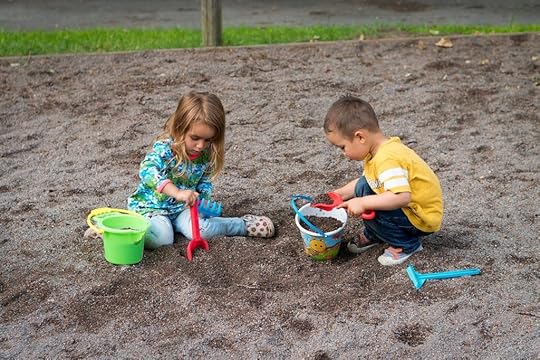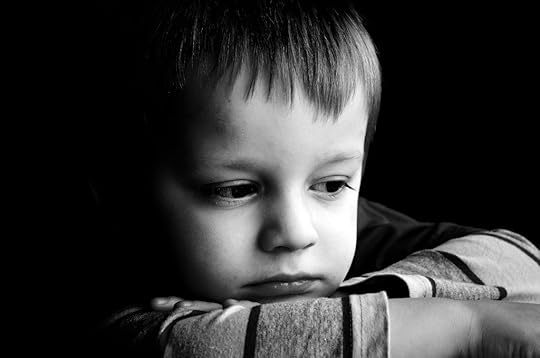Roma Khetarpal's Blog, page 10
September 11, 2018
Join us for a Twitter Chat on September 12

We invite you to join us on Twitter on Wednesday, September 12 at 8:00 CT for a discussion on Parenting Your College Freshman with Roma Khetarpal and your Host, 30Seconds.com.
You have been preparing for this moment for the past 18 years: your child has successfully graduated high school and is getting ready to embark on the adventure of college! While you are most likely experiencing feelings of pride, excitement and joy, you are also probably feeling a sense of loss and confusion.
Follow @romakhet and @30seconds, along with the hashtag #30Seconds.
RSVP to be eligible to win prizes.
The post Join us for a Twitter Chat on September 12 appeared first on Tools of Growth.
September 3, 2018
The Parenting World

“My kids know exactly how to push my buttons!”
“My son drove me crazy yesterday.”
“I’m going to throw one of them over the cliff if they don’t stop arguing.”
“I’m over the edge with this parenting thing.”
“I’ve had it with the two of you!”
Life is not always about celebrations. Our noisy, day-to-day parenting world is filled with challenges and plenty of emotion commotion. Our interactions with our children fill us with anger, test our patience, drown us in guilt, overwhelm us with doubt, cloud us with fear, and suck the life out of us with worry, turning us into mindless, reactive human beings. What if I told you this is not an accident. There is a higher purpose to this: It is that we may learn who we truly are (learn about ourselves and continue to grow) and that we can tap into our untapped inner resources to connect with ourselves by knowing our home. Only then can we can go from mindless parenting to mindful parenting. And we can raise extraordinary children that are connected with themselves and the world around them.
I’m not talking about children who have incredible physical skills or who attain good grades or a wealth of material things but children who understand who they are, are connected with themselves and hence have extraordinary self-management skills, and who know the true meaning of love, respect, self-worth, and self-confidence. These children become extraordinary human beings who do good for themselves and those around them.
For that to happen, we—the parents—must step up to the challenge and walk through some “negative” experiences with our children. We cannot ignore emotional chaos or sweep feelings under the rug. These experiences show us clearly how to use our Inner Core Intelligence. Just as doctors have to go through the challenges of medical school and a dancer needs to put in the grueling hours of practice to achieve their vision of success, it is imperative that parents face these challenges mindfully in order to grow their relationship with their kids. These “negative” experiences build strength in the parent-child connection. They are the droplets of water needed to nourish the seeds of intention that we have planted in the soil of communication. It is when we resist this growth that all hell breaks loose and we butt heads with our kids.
Our growth is very much tied to that of our children. If we don’t grow, they won’t grow either. When we have repetitive issues with our kids, it is because we are not willing to change our response to the issue—we are resisting growth. In essence, by challenging us, our children teach us more patience, tolerance, empathy, kindness, and compassion. By pushing us to grow, they make us better human beings, extracting hidden potentials that we didn’t know we had. For example, I have been a talkative person my entire life, but my children have taught me how to listen! They are our teachers just as much as we are theirs. Besides, we have no choice. We are not walking away from them. We may walk away from our spouse, parents, siblings, and friends but never from our kids.
The post The Parenting World appeared first on Tools of Growth.
August 27, 2018
Toddlers and Teens – Part 2

Too often we label the toddler years and the teenage years as difficult periods of growth, when we should be embracing them as learning experiences—both for our kids and ourselves. In my last post, I wrote about toddlers; this week let’s talk about teenagers.
The Teenage Years
Just as we tend to roll our eyes over toddlers’ actions, we do the same once our kids reach their teenage years. It’s really not very different for them. Teens are also going through a rapid growth period. They are preparing to branch out on their own, entering junior high or high school or moving away from home for college. They’re trying to find their unique place in the world. You might find your teenagers staying out too late or not letting you know where they are going. They probably think they know it all and may even become disrespectful at times.
That’s not pleasant, but it’s perfectly normal. The teenage years are preparation for adulthood and independence. We have taught our kids how to be young adults, and now we still expect them to do as they are told. So how can we keep our teens close while still letting them spread their wings?
Open Communication is the key to keeping teenagers close. Be open-hearted and open-minded. Here are some hard facts that science supports as well:
Teenagers’ minds run a million miles a minute.
They are emotional and impulsive.
They are opinionated.
Remember all that when communicating with your teenagers. Clear your mind to allow for their rapid-fire arguments or comments. Handle your emotions intelligently so that your feelings are not feeding your teens’ emotions and turning into explosions and disconnections. Allow them to express their opinions freely, even if you do not agree with them. Hold your preconceived rebuttals and suggestions until emotions are not charged. If you allow teenagers to communicate openly, you will be able to communicate back. Remember, you are the adult! Don’t enter the boxing ring with them. If they are throwing punches, stand by and observe. Respond with, “Aha, ok, I see your point, I understand.” Keep your tone of voice balanced, and watch your words and language. If you feel negative emotions rising, do not jump on that emotional express train. Instead, respond like this…
Unless they break a trust and are a danger to themselves or others, be a little more trusting that teenagers will make good choices. When we don’t show that we trust them, we start losing their trust in us.
Unconditional love. Even when our teens roll their eyes at us, we have to let them know that we will love them no matter what. They are going to make mistakes; of course they will. It’s our job to make sure they know that they amount to more than their mistakes.
Give them space. As I recommended you do for your toddlers, give your teens space to think. They are dealing with school, friends, jobs, new emotions, and perhaps boyfriend/girlfriend problems and also trying to figure out what they are going to do with the rest of their lives. That’s a lot for anyone to handle. Don’t be on them 24/7 about their choices of friends, grades, or life plans.
Our teens are amazing. And they are because we raised them to be. Let’s focus on the people they are today and not so much on who they will be in the future. Accept and respect their individual uniqueness and personality and refrain from comparisons. High school goes by in the blink of an eye. Don’t waste time on arguments and ego trips. Guide and step aside—give teens room to decide things for themselves and make mistakes. This is the only way to learn effectively.
Our kids are doing and learning exactly the way they are supposed to. Enjoy every moment, and know that you are doing the best job you can to raise them to be kind and loving adults. In the end, keep in mind that they are going through physical growth spurts, emotional shifts, and life changes both in their toddler years and their teenage years. We have to tailor our communication skills to the way they learn during these formative periods in their lives. Most importantly, give up any preconditioned or societal assumptions of how toddlers or teenagers are. If you roll up your sleeves and adapt, you will be teaching your kids valuable communication skills. With full awareness, mindfulness, and consciousness, embrace these stages as you do every other period of growth.
Wayne Dyer says, “When you change the way you look at things, the things that you look at change.” This change starts with you. Take this on like a leader, an advocate, and a champion for your kids.
The post Toddlers and Teens – Part 2 appeared first on Tools of Growth.
August 20, 2018
Toddlers and Teens – Part 1

Let’s face it, toddlers and teens get a bad rap. You can’t read anything about parenting without a focus on the “terrible twos” or difficult teenagers. When you tell people you have a 3-year-old or a 15-year-old, you’ll most likely get a sympathetic look and “I’m so sorry.”
We are doing a disservice to our children by labeling toddler and teen years as difficult. There are joys and challenges at every stage of child development, and we should be embracing these amazing stages of life as the truly remarkable learning experiences that they are… learning experiences for us, that is, the parents. It is especially at these two stages of growth that we are invited to raise our communication game. This week I’ll talk about the toddler years. In my next post, I’ll cover teenagers.
The Toddler Years
Between one and three years old, toddlers learn at an incredible rate. Not only are they learning to walk and talk, but they are also learning about their emotions and realizing they can do things apart from their parents. They become more aware of their place in the world. They are developing their own identity and in a way are experiencing “separation anxiety.”
The problem is that toddlers don’t have the vocabulary to communicate all these feelings and therefore tend to throw tantrums as well as objects. Built-up emotions and the lack of being able to express them through words triggers tantrums and what we call “bad” behavior.
It’s frustrating for sure, yet when we show our own frustrations with our kids by yelling and spanking, all we are doing is letting them know that we don’t understand them and that we aren’t paying attention. They get more upset, we get more upset, and we chalk it all up to the terrible twos.
When we understand that our children are in a deep state of learning—without the necessary communication skills—we can begin to embrace the wonder of the toddler years. How?
Show understanding. This might mean holding your child close and whispering, “I’m here for you” or “I will help you through this.” The only help that they need is your presence and full-on acceptance. That is what understanding is all about. When we resist their behavior, we isolate them further.
Build their emotional vocabulary. Ask your toddlers if they are hurt or angry or hungry or tired. Get to the bottom of why they are lashing out. It might be something simple that they can’t express. There are flash cards and emotional-vocabulary-building tools and toys out there. Building their emotional vocabulary is as important as teaching them the alphabet and building their word vocabulary. Remember, the trick is to give toddlers a way to communicate what they are feeling. With a little focused practice, you can raise emotionally intelligent kids—but, of course, that requires you to be emotionally intelligent first. Try a quick Dealing with the Feeling as your first go-to. Research today informs us that emotionally intelligent children are more likely to achieve higher life success and academic success. So set your kids up for success early on!
Give them quiet space. If you have tried all of the above and your toddler is still throwing a fit, so be it. Allow him or her to weather the emotional storm. Emotions create varying frequencies of energy within our body, and if these are not given a chance to pass through our systems, they will park themselves deep within, only to surface later. If your toddlers are okay with your holding them, do so in silence, both internally and externally. If your mind races or you get frustrated, allow your own emotions to pass through. Managing our internal landscape is the only way we can make ourselves available for our kids—without judgment—and exemplify how to self-manage and self-regulate. Like adults, children can feel overwhelmed and might just need a quiet place to erupt and release their emotions. Nature has a way of calming our internal state. Take kids outside when they are upset. Things as simple as a butterfly or a rabbit can be magically soothing to a child.
The toddler years may seem long, but they go by very quickly. Watch your youngsters closely, and learn to see the world as they do. Commit to simply being there for them.
Check back next week for Part 2 – Teenagers
The post Toddlers and Teens – Part 1 appeared first on Tools of Growth.
August 2, 2018
Learning to Share – 4 Things to Think About: Part 2

My last post focused on two important topics that we rarely share with our children—money and time. Our conditioning around these subjects is poor at best. I hope you thought about the negative impact that the lack of discussion on these topics can have on your kids. I also hope that your own perspective on talks about money and time has shifted.
Here are two more important themes that every parent needs to discuss:
EMOTIONAL HONESTY: Emotional Intelligence, or EI, is making waves in the parenting industry. We are living in a society where our basic living needs are being met better than for any previous generation. We no longer hunt for food, use weapons to protect our family from invaders, or live in difficult conditions in a jungle. So where do we turn the spotlight? Yes, inward. With basic survival no longer a concern, we are free to explore our inner world. What underscores this fact is that self-help is now a $9.9 billion industry, and emotions are taking center stage.
With science-supported data, we are encouraging our kids to express their emotions and learning to validate those feelings. In my award-winning book, The Perfect Parent, I’ve simplified Dr. Daniel Goleman’s EI steps with an easy tool that I call Dealing with the Feeling. This tool has been received with rave reviews. Nevertheless, there is one problem: Our generation was not raised to express emotions. So while we encourage our kids to express their emotions, we are hardly being emotionally intelligent ourselves.
We all know that kids learn best by example. They will follow what we actually do, not our advice. Unless an expression of emotions is second nature to us, it will not be second nature to our kids. How often do we say when we are upset, “I’m fine. Don’t worry about it.” Or “I’m not mad at you. It’s something else.” Or “You’re a kid. You won’t understand.” Or simply—as our parents said—“I don’t want to talk about it.”
Kids know when we are upset. They can sense it in our behavior, our tone of voice, our body language, and facial expressions. So what I’m advocating is emotional honesty. Be honest about what you are feeling. Name the feeling, though remember to use discretion if you feel the cause of your emotions is not child-appropriate. I remember when my kids were younger, my 12-year-old son kept pestering me to “tell the truth” when I looked upset. My responses that “I’m not mad” and “why do you think I’m mad” were not working for him. Suddenly, my 15-year-old daughter chimed in, “Go ahead, Mom. Spill your feelings. It will help you feel better. You always tell us that.”
She was right. I needed to practice what I preached. So I told them that I was upset at their dad. Naturally, they asked, “Why?” “Well,” I responded, “he told someone something that I had asked him to keep private.” Of course, they wanted to know what he said and to whom. At this point, my discretion kicked in, and I said that the details were not important. I simply felt that he had betrayed my trust.
My daughter immediately jumped in: “Well, talk to him about it. He might have a reason.” Truly I had been so buried with negative emotions of betrayal that I had not even considered that. “You always say that we should always give the other person a chance to explain their side,” my daughter went on. “That is what communication is about,” added my son. My kids clearly reflected what I had advocated to them. I was grateful for their wisdom, insight, and timing. It was one of the best lessons I ever learned from them. And it made me feel much better. When my husband got home from work, we had a civil discussion about the issue.
We cannot and should not underestimate our children. If we teach them emotional honesty by example, it will become a habit for them!
DISCLOSURES OF WEAKNESS: In this era of positive reinforcement, we are always reminding our kids how good they are at something and appreciating their strengths. When it comes to their weaknesses, however, we may dance around those so we don’t hurt their feelings, or we are unkindly harsh. On the one hand, we might say, “What do you think about tutoring for math, honey.” On the other, we might lash out with, “You got a C in math again? That’s it! You’re starting with a tutor next week.”
As parents, it is important for us to point out our children’s weaknesses in a neutral matter-of-fact, nonjudgmental way. You could say to your sophomore in high school, “You have a C in math again. Is it not your strong subject or are you not interested?” Parents must have the strength to point out an area of growth by first seeing it “as it is.” When we do this, we open up the door to effective communication and come up with new strategies to tackle the issue. After all, there is no way we can be all be good at everything. The first step should be finding out if your child is okay with the C, for example, and is simply not interested. If so, be okay with it. Let him or her know that that they should put in enough effort to at least pass the class. If they expect to go to a high-achieving college, they should understand that this might affect their chances.
Your job is to make them aware of the facts. If they say that they actually want to do better, then ask how they plan to do that. If they want a tutor, offer your support. If they say they do not know what to do, you could suggest a tutor. The key is to address the weakness, not hide it.
Take opportunities like these to let your kids know what your own weaknesses are—which ones you have let go of and which you are striving to improve. Disclosing your personal weaknesses is the best way to guide your children through theirs. It will help them bypass the destructive inner dialogue that says, “I’m a failure,” or “I’m not good enough,” or “I don’t care.” Such self-deprecating statements add to a lack of self-confidence, self-esteem, self-respect, and self-love —which will eventually affect other areas of their lives. An open, honest disclosure of weakness will help children see that this is part of human nature. We need to either accept our weaknesses as they are—without hiding them and without ignoring them—or put into place constructive steps to strengthen them.
There is no magic bullet to raising children. The only formula to raising kids who are well rounded is open and effective communication, not just about sex, drugs, boyfriends, and girlfriends but also about rarely discussed topics like money, time, emotional honesty, and weaknesses. These subjects should be priorities on every parents’ discussion list. However, instilling healthy habits and attitudes on these topics will only happen if you step out of your own comfort zone and commit to them yourself.
In the words of Stephen Covey, “What you do has a far greater impact than what you say.”
The post Learning to Share – 4 Things to Think About: Part 2 appeared first on Tools of Growth.
July 19, 2018
Learning to Share – 4 Things to Think About

“Don’t be selfish. Share your toys with your sister, please.”
“Why won’t you share your candy with your brother? It’s not nice to keep it to yourself.”
“You need to share the iPad with Jeffrey. It’s his turn.”
“If you don’t share your things, no one will want to play with you. Let Cathy take a ride on your bike.”
We are constantly nudging our kids to share. When they don’t, we are quick to remind them that their behavior is selfish. Our goal is to teach our kids that by sharing our possessions, we foster connections through consideration, kindness, and generosity. That is how we encourage inclusiveness.
Yet, there are certain other things that we never advocate sharing—things we do not even discuss. These are things that we are preconditioned to consider “private.” This week and next I’ll write about 4 of those things that I believe we must teach our kids to share. As you read about them, please keep an open mind and reflect upon whether or not you yourself are willing to share these with your friends or family.
MONEY: Yes, this is at the top of the list because we are conditioned to believe that if we even talk about money—let alone really share it—we are being egotistical or materialistic. We believe that others will think we are boasting about what we have or complaining about what we don’t. In either case, they’ll take a step away from us. But that’s hardly true. Moreover, if a topic is taboo in discussion, how can we learn more about it and how to grow it? Discussion has to start with the parents—rich or “poor.”
Then comes the next step: Sharing the money we have. Too often we berate our kids, saying:
“This is your money. Why did you give him five dollars?”
“I don’t want you giving away my hard-earned money.”
“Money doesn’t grow on trees. This is for our family and not for you to blow on your friends.”
That’s hardly a way to promote inclusiveness. The oxymoron is that we want our children to be financially intelligent, but we only teach them exclusiveness around money. Why not encourage your kids to share their money just as you encourage them to share candy, toys, or the iPad. Teach them how to wisely keep some for themselves and to share if they see a person in need. Sure, someone may take advantage of this and strong-arm them for a few dollars. Be okay with that. They will learn and grow from it. Teach them the concept of abundance by advocating that there is a great deal of money in the world—enough for all of us to share and enjoy. The more open we are about sharing it, the more we manifest. The only hard lesson we need to press upon our kids is that they must share with humility.
If money is a day-to-day topic of discussion, and we ourselves are not defined by it, neither will our kids be shackled by it. Give your kids the freedom to talk about and share their money. If we want your kids to gain financial intelligence and independence, we must give up everything that will weigh them down.
TIME: We are living in an age where time has become a commodity. A parent’s’ biggest complaint is “I DON’T HAVE TIME.” We barely have time to get through the day-to-day tasks that we have to do; there is no time to simply be .
The only time we use the word “be” is when we say, “At 4, I have to be at soccer practice,” or “at 6:30 I have to be home for the plumber to repair my broken sink.” All our “being” is attached to a number on the clock. But human beings are not wired to follow the numbers on the clock day in and day out, year after year.
Get yourself and your kids off the clock. You cannot connect with your kids if there is no “free” time. Time will not stop for you. The clock is constantly ticking and moving, as is life. Free up at least five minutes a day for yourself and your kids. I call this tool TAKE 5. Do this for just 30 days, and watch how effective your communication with your kids will become. See the trust factor escalate in your relationship. Watch the arguments deescalate in your home, to be replaced by joy and laughter. Take 5 is a tested tool that will change the trajectory of your relationship with your kids.
But first, in order to do this, you must talk about time. You must sit with your kids and let them know that you will make a conscious effort to get off the clock every day by yourself and with them. Ask them to help by reminding you the first day you fail to Take 5. Trust me, they will! And then magic will happen. They will start to share off-the-clock time with their siblings, friends, and peers. Most importantly, they will learn what unscheduled time feels like. It will give them an inner address to go to when they are overwhelmed and overstretched.
Simply opening up a discussion about time will open up their awareness to it. Start with simple questions like “What do you think about time?” “Does time really fly?” “What would stopping time mean to you?” And then be prepared for a whirlwind discussion.
Next week, I will share two more important things we must learn to share. If, by then, you have been bold enough to discuss the first two with your kids, leave a comment so that our community can learn through your courage and growth.
The post Learning to Share – 4 Things to Think About appeared first on Tools of Growth.
July 11, 2018
Will Our Cultural Mind-Sets Push Our Kids Away?

This post was first published on Masalamommas.com.
As a mother of young adults, I have been noticing more and more how my generation is caught up in thinking that was set by our parents’ societal influences. We seem to expect that the children that we have raised here in the modern Western world should abide by the norms of society as it was when we were growing up. When it comes to education and our children’s “successful” careers, we have supported them 100 percent. For the most part, our young adult children no longer live at home, and we have made our peace with that. We have let them pursue their own lives and careers. Well, careers maybe, but definitely not lives.
Here’s the gist of a phone call I recently received from a friend seeking parenting advice:
“Yesterday I had a blast for Mother’s Day with my kids. It was so nice to have them home for the whole day. With their busy work lives, I was touched that they took the time to cook a delicious meal for me. I’ve pretty much accepted the fact that they are successful and living on their own now. Honestly, I often boast about that.
“Secretly, I had hoped that they would live at home until they got married— just as everyone in our generation did—but I have come to terms with the fact that life has evolved and kids are getting married later than we did. As I see more and more Indian kids doing this, I can accept that this is the norm, though I dare not talk about it.
“As we were having our Mother’s Day meal yesterday, my 29-year-old daughter asked me to keep her friend, Anila, in mind to introduce to any nice boys that I might know in my friends’ circle. I immediately suggested Dillan—a family friend’s son. After all, they are from the same cultural background, and he is 32.
“My daughter’s eyes lit up, and she said, ‘Oh, my gosh! Why didn’t I think of that? I forgot to tell you that I saw Dillan and his dad in my apartment building the other day. They were apartment hunting because Dillan wants to move to Burbank to be close to his family business.’
“The first thing that came out of my mouth was, ‘Was Deven with you?’ That’s my daughter’s boyfriend, almost her fiancé.
“‘Yes, yes, they met Deven, too,’ she answered.
“‘How did you introduce him?’ I asked.
“‘I just said that this is my friend Deven. And they both smiled and gave him a hearty handshake. They figured it out. Why would you ask that, Mom?’
“‘Oh, just wondering,’ I lied. I could feel my heart sink. The thought that was running through my mind was, Oh, no! People will start talking. They have been dating for a year now. They should just make this official. What are they waiting for? This looks so bad. To make it worse, my son immediately joined the conversation and said, ‘Oh, yeah. I forgot to tell you that Jiselle’ —his serious Hispanic girlfriend—’and I met Aunty Sheila and Rajesh and Nita in La Jolla last month.’ Those are also close family friends.
“Now my heart was in my mouth. My internal dialogue got louder: What the heck are these kids doing! Yet I was disappointed in myself because I knew I had double standards. On the one hand, I love both Deven and Jiselle and think that my kids have made such great choices in partners. Yet I was uncomfortable that they had publicly met family friends with their prospective partners while in uncommitted relationships. I hadn’t even told my parents about Deven or Jiselle. And then I felt guilty for thinking badly about my own kids.”
My friend is not alone in her dilemma. Other parents have told me about the trouble they have accepting and talking about their millennial children living with their partners before getting married or even engaged. As my own children have entered adulthood and found their partners, I myself have felt similar feelings of discomfort. I, too, know this is life today, but I secretly wish they would follow the progression of meet, marry, live together—all within 6 months—just like my generation did.
As my friend and I continued our conversation, we acknowledged that we had done things that our parents balked at or were uncomfortable with. When I was introduced to my now-husband, Harish, through our families some 33 years ago, we both wanted to “get to know each other” before committing to marriage. Even after I was engaged, I remember having a grand old fight with my mom because I wanted to visit Los Angeles to better get to know my then-fiancé.
Yes, I had been born and raised in Kuwait, but I felt that I was modern. Gone were the times when you met, got engaged, and married without spending any time together. My mom finally caved in and accompanied me to the US. During my ten-day visit here, despite my mom’s strong disapproval, Harish and I went out every single day from 10 a.m. to 11 p.m. I remember vividly asking my mother what she was worried about. After all, we were engaged to be married.
Her answer was, “I have two worries: One, I don’t want people to get the wrong impression about you. Second, with hormones raging at your age, anything can happen. I don’t want you to be a mother before you are a wife.”
My answer was, “We are living in modern times, Mom. You need to get with it. Our generation has to get to know each other before we get married. And how could you think that I would be that stupid. I can’t believe that you don’t trust that I know how to take care of myself.” Even at age 20, I found that both humorous and insulting!
So have times changed at all? No, they really haven’t. We still worry about the same things that our parents worried about, and we react the same way they did, though perhaps over slightly different things. Human nature is designed to grow and evolve with time. Mind-sets are never a constant; they continue to evolve through new experiences. Each generation extends the boundaries in relationships just enough to make the older generation uncomfortable.
We become uncomfortable because we are unfamiliar with something. When our kids venture into what is unknown to us, we feel fear. And we all know that fear multiplies like a plague! Fear of the unknown gives rise to too many “what-ifs”: What if they have given too much to a relationship without a paper commitment? What if they get hurt or pregnant? And, most of all, what if society and our community judge them?
But fear not, parents. We are all in the same boat that our parents and grandparents were in. It’s just that we don’t talk about it. We pretend that our kids are the only ones whose mind-set is beyond our experience. What if we “modern” parents took a lesson or two from the Western world and allowed our kids to move into their relationships as they see fit— without resistance. It’s not like we need to allow them to do this or that. They are going to do what they do regardless—just as you and I did.
Why don’t we free ourselves to accept and not expect? Trust and not judge? Why don’t we step into our kids’ shoes and be excited about how different life is now. Why can’t we be confident that they will turn out fine, just as we did? Why don’t we throw away our preconditioned mind-sets and embrace what is new, releasing ourselves from old patterns? Why live in the past, buried in unwarranted emotions over something we have no control over? Why not be the first generation to break free from the shackles of a generation-old mind-set and enter the “now” with enthusiasm? Are we brave enough? Because ready or not, the future is here, and we will never experience it as our kids will.
Such is life. Clearly, our kids have let go of whatever we had planned for them and have entered the life that is waiting for them through their own experience. With the advent of technology, our children’s world has truly become “one human race.” Can we step into this oneness with our children—embracing all cultures, religions, and races, letting go of our preconditioned cultural separations and societal influences?
Life can only be lived going forward. That must be our new mind-set. We owe that to our children, or we will leave them no choice but to move away from us. So let’s take this opportunity to open up a dialogue and release our kids from our old thinking.
What are your culturally induced fears for your young kids? What are your preconditioned challenges with your adult children? What are you feeling ashamed of or afraid to talk about?
Disclaimer: I’m extremely grateful to my friend—you know who you are— for letting me share her valuable private story. All names used above are fictitious
The post Will Our Cultural Mind-Sets Push Our Kids Away? appeared first on Tools of Growth.
July 2, 2018
College-Bound Kids? Check Your Parenting Boundaries!

After all the excitement of high school graduation, summer’s next task is preparing our kids for college. High school gave us a taste of what it’s like to be a hands-off parent, with kids learning to advocate for themselves, speaking to their teachers and administrative staff on their own, scheduling homework and study sessions, and navigating clubs and sports. Undoubtedly, though, we still had our hands in the mix. We could give our opinion on their classes, suggest how to approach a teacher, and wake them up when their alarm didn’t go off, fully aware that in just a few short months, the kids would be taking care of everything on their own. Or would they?
Online parenting forums are filled with folks looking for ways they can make life easier for their college-age kids. They want to know who to contact to change a class, how their child will get from one end of the campus to the other, and what to do if their son or daughter doesn’t like their roommate? As we check off the list of things to bring to school and push our child to email the future roommate to find out which one is bringing the microwave, we are missing the point of college: to let our children explore adulthood and start figuring life out for themselves.
Just a few weeks before my 18-year-old son went off to university, I had a big argument with him over laundry. I had told him that he needed to start doing his wash himself to get into the habit. Then I happened to walk into his room at a time when there were clothes everywhere. Naturally, I exploded.
“I know you’re not going to be able to manage on your own,” I shouted. “You can’t even get into a routine of doing your laundry! You have no idea what independent adult life requires. You have to be committed to taking of yourself. You need to get to it now or you’re not going out with your friends!
There it was—all my worries about how he would survive packed in five angry sentences. My son shut me up quickly with his answer: “Mom, first, I’m 18½, and you can but you shouldn’t be telling me when I can and cannot go out with my friends. As you remind me often, I need to make my own decisions since I’ll be leaving in a few weeks. Second, you’ve invested a lot of time, money, and heart in supporting and funding my education. I’ve completed 5 AP classes and several rounds of SAT tests. Do you seriously think that I’m not capable of separating clothes by colors and pushing buttons on a machine? Last but not least, I take four showers a day and am an ultra-clean person who does not like wearing the same clothes more than once. Do you seriously think that will change?”
I started in on a rebuttal, but he stopped me with: “Can you just answer yes or no. I really need to know how much faith you have in me. You also seriously need to know how much faith you have in how you raised me!”’ He scrunched his forehead, crossed his arms, tapped his foot, and waited for me to answer. Of course, I burst out laughing! I knew he was capable. I was just anxious.
I smiled and said, “I have a feeling that you’ll wait until you have no more clothes to wear.”
“You’re right,” he responded. “I might do that once or twice. But I’ll live and learn. Isn’t that the point, Ma?”
We spend 18 years preparing our kids for being on their own, and that includes going to college. If we have done our jobs correctly, they should be able to find the phone number for their counselor, read a bus schedule, or set their alarm clock. If we have done our job right, the kids should know that pizza for dinner every night probably isn’t a great idea. They should also know how to find their way to the local market or department store. After four years of high school, they should know how to study and organize their notes. They should know that skipping class is a bad idea. And, as my son reminded me, they’ll even learn that eventually, they’ll have to do their laundry.
Still, it’s hard to stop ourselves from stepping in, just when we should be letting go. Here are some ways to ease the transition… for them and for us.
Let the kids choose their own classes. Colleges today are pretty good about knowing what classes a student needs to take to complete a degree. That’s what college advisors are for. Let the staff members do their job. If your student has a question, he or she can call or email the advisor directly. If your child wants to run things by you, that’s great. But whatever you do, don’t call the school on your child’s behalf.
Quit nagging. It’s the easiest way to shut down communication. Your idea of nagging might be different than mine, but there is no need to constantly ask about studying and homework and whether your kids are getting enough sleep or eating regular meals. This is the time for them to figure out what works best for themselves. Let them do it!
Don’t obsess about grades. You won’t be getting a report card from your child’s school anymore. And if you constantly ask how they did on a test, it only puts added pressure on them. College is hard… and lots of kids struggle through their first semester. A bad grade doesn’t mean they aren’t going to be successful. There is a learning curve for everything. Let them ride that curve.
They don’t need everything on the what-to-take list. It’s okay if you send them to school without a warm-enough coat or the right-size bed sheets. Dorm rooms are small, and there is no way you can know for sure what they will or won’t need. There is undoubtedly a store nearby… and there’s always Amazon. Seriously, they can buy what they don’t have.
Stay out of roommate issues. Your son or daughter might call to complain about their roommate, but that doesn’t mean they need to get a new one. Part of living in a dorm is learning how to deal with people. Disagreements build communication and self-reliance. Encourage them to work things out. This is problem-solving at its finest.
Do not expect to hear from your kids every day. More importantly, do not overstress “keeping in touch daily.” Please don’t hang it over their heads if they skip checking in for a day or two. You’re sending them off to start their independent lives. Growing into adulthood means not having to call mom or dad every single day. Be grateful to hear from them whenever they call, without guilt trips or shaming. Gentle, short text reminders like “I miss you” and “hope you’re doing well” are okay. But be sure to add, “I’m so excited for you.” And moms, cut down on the emojis!
Feeling homesick doesn’t mean someone should come home. Most kids are going to get homesick at some point. College is a huge change for them. They are used to parents and siblings being around all the time. Now they are alone and have to make their own decisions. It’s not easy for sure, but don’t respond right away with, “It’s okay, why don’t you come home.” Chances are, after a bout of homesickness, the kids will perk up and be just fine. And a little homesickness will make those school breaks all the sweeter for both of you.
Yes, our babies are leaving home, and we can’t help being emotional about that. But this is exactly what we’ve prepared them to do. We’ve raised young adults who are capable of figuring out things for themselves. Now let’s take a step back and let them do just that.
As Julie Lythcott-Haims says in her groundbreaking book, How to Raise an Adult, “No one can give another person life skills. Each of us has to acquire them by doing the work of life on our own.” So guide and step aside. Make way for your children to forge their own path through their own experiences. It’s how life is learned best.
The post College-Bound Kids? Check Your Parenting Boundaries! appeared first on Tools of Growth.
June 22, 2018
Talking to Your Kids About Suicide

With the recent widespread newscasts on the suicides of fashion designer Kate Spade and food and travel guru Anthony Bourdain comes the big question: How can parents discuss and explain suicide to children? This discussion is undoubtedly the most difficult one you can have—no matter how old your kids are. Here are a few tips that you can tailor as you see fit:
Define the word “suicide,” age appropriately, in a wider discussion of death. While most dictionaries define suicide as “the act of taking one’s own life voluntarily and intentionally,” that might be too harsh to convey to children of any age. If your child is between the ages of 7 and 12, you could define suicide more simply as “taking one’s own life.” If your child is a tween, teen, adolescent, or young adult, they undoubtedly have a somewhat clearer understanding of death, and opening up the discussion about it, while never easy, is necessary. Letting your children know that death—like birth—is very much a part of human existence will open the door to a discussion. When it comes to talking about suicide, lead with courage and fact sharing instead of fear. Of course, talking about suicide raises the question: Why?
The answer to why is multifaceted and murky. When my son was in eighth grade, one of his classmates hung herself with a belt. The school provided my 14-year-old and his peers with counseling and education on asphyxiation, the dangers of choking, and “the pass-out challenge,” but dealing with the why fell into my lap. Letting children of any age know that suicide is committed by people who have mental health illnesses or a drug-related problem sends the important message that suicide is not “normal.” That’s what I told my son, adding that his peer had a history of depression and anxiety that were made worse by other family problems, that she was sad for a long time without support or outlet. That also gave me a chance to talk with him about how important it is to manage one’s emotions.
Be honest and open, age appropriately. At times like this, our kids rely on us. If you don’t have an answer to a question they ask, let them know that it’s a good question, and you will research the answer for them. Being honest and open will open up the doors to communication, and the discussions will help children sort out their emotions. Whether it’s a normal death or a suicide, there will always be emotions attached to it.
Allow children to express their emotions fully. When emotions go unaddressed, they park themselves deep inside our psyche and plant fear. While education and information deepen understanding and reasoning, emotional expression addresses the underlying fear, which otherwise would bury itself in the subconscious only to find an exit elsewhere. Facing the fear and talking about it is of the utmost importance. Dealing with the Feeling, an emotional intelligence tool, is one I highly recommend for every parent. The steps are simple and the results profound.
Revisit the topic in a few weeks by asking your child how they are feeling about it now. While time is a big healer, returning to the subject later will ensure a less emotional discussion and let you gauge how your child is handling exposure to the topic.
Truly, there is no easy way to have a discussion on death, let alone suicide. Nonetheless, it is a definite opportunity to establish communication and deepen and strengthen the parent-child bond. Such discussions let your child know that you are always there for them – building trust, empathy, compassion and, most of all, resilience. As philosopher Alain de Botton said, “A good half of the art of living is resilience.” In resilience lies courage and self-confidence—both of which we want to nurture in our children.
For additional support, you can also refer to the Society of Prevention of Teen Suicide.
The post Talking to Your Kids About Suicide appeared first on Tools of Growth.
June 12, 2018
How Stress Can Prevent Healthy Child Development
When we think of our children, the last thing we want to do is impose any kind of stress on them. But let’s face it, children are emotional human beings and stress is something that almost every child and adult encounters on a daily basis. However, not all stress is bad – but it’s not all good either.
Learning to cope with stress is an important part of healthy development for children. When stress is on the rise, our bodies prepare us to respond by increasing our heart rate, blood pressure, and stress hormones. How our bodies respond to stress differs – depending on the environment – and are broken down into three categories: positive stress response, tolerable stress response, and toxic stress response:
Positive stress response – A normal stress response and part of a healthy development. This response may occur when meeting a new caregiver or getting an immunization at the doctor’s office. A positive stress response briefly increases the heart rate and can cause mild elevations in stress hormone levels.
Tolerable stress response – A serious but temporary stress response. If the stress is relieved quickly (i.e. comforted by a parent or nurturing adult), the stress response winds down and the body quickly returns to normal. If the stress is not relieved quickly, the brain and other organs may have damaging effects.
Toxic stress response – Prolonged activation of stress – such as a child being neglected for a long period of time, physical or emotional abuse, or caregiver mental illness, can cause a toxic response. Toxic stress can disrupt the development of brain architecture and other organ systems, and increase the risk for stress-related disease and cognitive impairment, well into adulthood. If toxic stress occurs repeatedly, it can affect a person’s physical and mental health for life.
According to research, the damaging effects of toxic stress response may be prevented or reversed if supportive and responsive relationships with caring adults are present as early in life as possible. Reducing exposure to extremely stressful conditions is the best way to prevent damage from toxic stress response. If at least one parent or caregiver is consistently engaged in a caring, supportive relationship with a young child, most stress responses will be positive or tolerable.
Source: Center on the Developing Child | Harvard University
The post How Stress Can Prevent Healthy Child Development appeared first on Tools of Growth.




